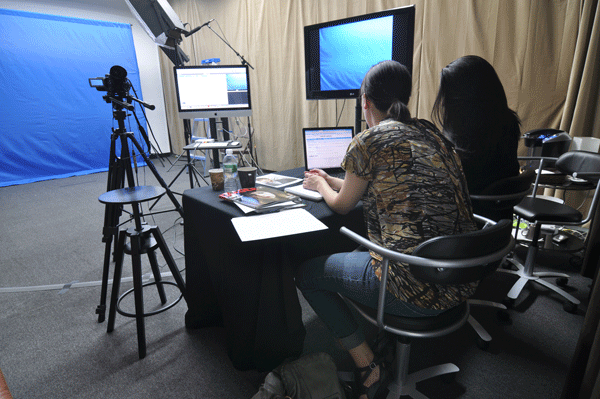Introduction the back casting room
back casting room: In the realm of film and television production, it is evident that it is a culmination of much creativity, teamwork, as well as decision-making. There is, however, an aspect that is rarely considered but is nonetheless important – the back casting room. It is the room in which everything comes together; where possibilities become reality. But what is a backcasting room? And why is it crucial for the success of the project as a whole?
Whether it is the production of the next hit film, or for instance, a no-budget independent short, knowing your way around a backcasting room will increase your chances of success in whatever you are attempting to achieve.
It can mean improving audition processes and incorporating some form of information technology to enhance the execution of the tasks involved – this is a skill that can refine any production experience. We will be examining five strategies that, when employed, will increase the chances of positive outcomes in this area of filmmaking and television production, considering it is one of the most essential elements in the backstage area.
What is the Back Casting Room?
The back casting room is a dedicated area for the purpose of auditions. It is a section that is not easily accessed where people can sit behind the scenes without being bothered by obligations. Here, actors perform for producers and directors. This type of situation is suited when there is a need for conversation without interruptions. In this regard, casting agents get to see the performers as they perform and make decisions that can change the fate of their careers.
It is, however, playful as it was designed to be so and extravagant with lighting and sound dampening so that clarity during perspective takes is retained. Sound lounges provide necessary comforts that assist in the ease of discussions between the auditioners and the decision-makers. The components of the casting room include cameras and a microphone, therefore all actual productions are also recorded, and relearning these performances assists in better evaluations. Such multiple strategies improve the evaluation of talents for film and television production in the best way possible.
The Importance of Back Casting in Film and Television Production
Backcasting is an important aspect in terms of any film, television or show production. It enables the artists to go back in time and check what has already happened and ensure that there is no discrepancy in the storyline. This technique is crucial in particular for the series because the production might take multiple seasons to be completed. The technique allows for better management of the characters and their respective storylines. After looking at how a character has been portrayed before, the director knows what to do in some episodes or films down the line.
Also, backcasting encourages inter-departmental cooperation. Writers, directors, and actors can discuss the transformations of the characters in the body of work they have previously done. This results in enhanced cohesion of storylines. Additionally, it helps in finding new positions easily. Producers can use previously recorded auditions and performances to identify suitable candidates without starting the recruitment process from scratch.
How to Set Up an Effective Back Casting Room

The backbone of a great back casting room is a suitable back casting room space. Look for a quiet location that is large enough to accommodate several setups. Install adequate lighting which may consist of soft box lights, where natural light sources cannot be implemented. Next, arrange seating for the cast members as well as the panel of judges who will do the reviewing. Comfortable settings help to reduce actors’ tension during auditions. If the actors are not performing their lines or in front of evaluators, there should be sufficient distance between them.
Soundproofing is equally important; it is necessary to apply acoustic panels in order to reduce external noise while recording. And, of course, technology! Ensure your back casting room is equipped with high-definition cameras and microphones so that the performances of the actors can be captured clearly. This ensures that in the event of reviewing an actor’s performance, no important components are overlooked.
Since the room is going to be a creative space, decorations such as paintings or plants representing the branding of the production ought to be included.
Tips for Conducting Successful Auditions
Creating a friendly environment is very important when conducting auditions. Ensure that the room has a relaxed and professional atmosphere. This is beneficial to both casting directors and the actors as it provides a positive approach. There are some clear expectations that need to be set. Explain in detail how the audition will be conducted, stage by stage. Actors should be aware of their sides and particular requirements for a character or other materials.
Do however be quite flexible in how the character is portrayed and what the scene is by encouraging authenticity. Instead of forcing the audience to expect a particular portrayal, give them room to experiment with a variety of ways to play the character.
Offering feedback can be invaluable. After every single audition, always give notes that seek to assist actors in developing their craft yet reaffirm their core strengths as well. It may also help to try and videotape the auditions when available. This aids in the review process as it can be done at a later date and also ensures that talent is not lost due to reviews being strictly based on memory.
Utilizing Technology in the Back Casting Process
In the current market, which is constantly evolving, new technology has become very helpful in optimizing the entire back-casting procedure. Scheduling auditions, in addition to securing talent, may also be facilitated by the use of digital resources. Videoconferencing tools also make it unnecessary for actors to travel as they can audition from their location. Such flexibility provides an opportunity for accessing a more diverse talent pool that would otherwise go untapped.
In addition, working on cloud platforms facilitates teamwork and collaboration among the production staff. Throughout the casting process, scripts and remarks are sent over, so each team member knows what has happened at any particular stage. Casting professionals too, rely on AI-powered algorithms, to obtain a better picture of performance patterns. Such information assists in understanding what qualities are most appealing and suited for specific characters.
Thanks to the advances in the quality of recording devices all auditions are guaranteed to be recorded in standard. This not only helps with the making of decisions but also contributes to important video material, which can be used later when casting actors for new projects.
Case Studies: Examples of Successful Back Casting Rooms
One example of a successful back casting room has been the one adopted by a well-known television network during the handling of auditions for its prime-time series. They designed an ordinary room into a vibrant space with adjustable lights and several cameras to mimic an actual audition setting.
In another case, an independent film production was done wherein VR technology was used in their back casting room. The actors were able to get into the scene which enabled the directors to have a better understanding of their performances. A well-known theatre company employed a different strategy by allowing previous cast members to run workshops in their back casting room.
This helped not only in developing great relationships but also in attracting new performers who wanted to learn from great masters. These examples show that when there is creative planning, there is no better way to complete the cast for the projects than planning the casting through the virtual worlds created by the filmmakers who at the same time engage the performers in an interesting atmosphere.
Conclusion
The back casting room is an important element of the whole film and television production process. With objective knowledge of its role, its effective organization, and the availability of modern technology, you can speed up the casting process. Use examples of good practice as benchmarks for bettering your practice. This is particularly important not to forget the littlest things when making a façade for showcasing talents, which is – to say the least – a rather challenging task to do.
By applying these tips, you will improve not only the productivity of the back casting room but the final quality of the relocations as well. This allows for a creative environment where talents can emerge and stand out. The correct arrangement can help in locating the right person for your project. Welcome new thoughts and concentrate on teamwork to enhance your project on the following level.
FAQs:
What is a back casting room?
Answer: A space for preparing and casting materials in production.
Why is a back casting room needed?
Answer: It ensures a controlled environment for precise casting.
What happens in a back casting room?
Answer: Molds are created and materials are cast in a safe environment.
What materials are used in a back casting room?
Answer: Wax, resin, and metal are common casting materials.
